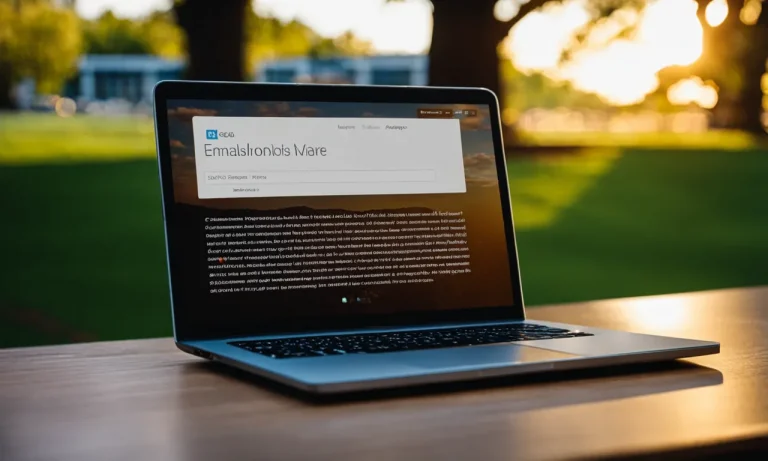The new school year is always an exciting time, filled with fresh starts and new beginnings. For families relocating to South Korea, knowing the academic calendar is key to settling into a new routine.
If you’re short on time, here’s a quick answer: The South Korean school year typically starts in early March.
In this comprehensive guide, we’ll cover everything you need to know about the school calendar in South Korea, including start and end dates, term lengths, holidays and vacation schedules. With all the details mapped out, you’ll be fully prepared for the academic year ahead.
The South Korean Academic Calendar
School Year Duration
In South Korea, the school year typically starts in March and ends in February of the following year. This differs from many other countries where the school year starts in September. The academic calendar in South Korea is structured to align with the country’s cultural and societal norms.
View this post on Instagram
First & Second Semesters
The South Korean academic year is divided into two semesters. The first semester usually begins in early March and ends in mid-July. During this time, students engage in various academic activities such as classes, exams, and extracurricular activities.
The second semester starts in late August or early September and concludes in February of the following year. This semester is often more focused on preparing students for national exams and assessments, such as the College Scholastic Ability Test (CSAT), which plays a crucial role in determining university admissions.
Summer and Winter Breaks
South Korean students enjoy both summer and winter breaks during the academic year. The summer break typically lasts for about six weeks, starting from mid-July and extending into late August. During this time, students have the opportunity to relax, pursue personal interests, and participate in summer camps or programs.
The winter break in South Korea is shorter than the summer break and usually lasts for two to three weeks, starting from late December and extending into early January. This break allows students to celebrate the holiday season with their families and recharge before the start of the second semester.
It’s important to note that specific dates for the start and end of breaks may vary between schools and regions in South Korea. Therefore, it’s always recommended to check with individual schools or the Ministry of Education’s official website for the most up-to-date information on the academic calendar.
When Do Schools Start the Academic Year?
South Korea follows a different academic year schedule compared to many other countries. The school year in South Korea typically starts in March and ends in February of the following year. However, it is important to note that there may be slight variations in the start and end dates depending on the specific level of education.
Primary Schools
In primary schools, the academic year usually begins in early March. This is when students transition from one grade to another and are introduced to new subjects and curriculum. The exact date may vary slightly from school to school, but it is typically around the first week of March.
Middle Schools
For middle schools, the academic year generally starts around the same time as primary schools, in early March. Middle school students also experience a transition to a new grade level and are exposed to more advanced subjects and coursework.
Again, the specific start date may vary slightly depending on the school.
High Schools
High schools in South Korea also begin their academic year in early March. This is a crucial time for high school students as they prepare for college entrance exams and make decisions about their future career paths.
The start date for high schools is typically aligned with the start dates of primary and middle schools.
It is important for parents and students to check with their respective schools for the exact start dates of the academic year, as there may be slight variations. Additionally, it is worth noting that South Korean schools follow a rigorous academic schedule, with students often attending classes six days a week and participating in extracurricular activities.
School Term Dates and Holidays
First Semester
The school year in South Korea typically starts in early March, with the first semester running from March to July. During this time, students attend classes and engage in various academic activities. The exact start date may vary slightly from year to year, so it’s important to check with your specific school or educational institution for the most accurate information.
Second Semester
The second semester usually begins in late August or early September and runs until mid-February of the following year. This period encompasses a significant portion of the academic year, with students continuing their studies, participating in extracurricular activities, and preparing for exams.
Again, it’s advisable to confirm the exact start date with your school to avoid any confusion.
Summer Break
South Korean students enjoy a well-deserved break during the summer months. The summer break typically lasts for about six weeks, starting from mid-July to the end of August. This break provides students with an opportunity to relax, recharge, and engage in recreational activities.
Some families may choose to travel or take part in summer camps during this time.
Winter Break
The winter break in South Korea generally falls between late December and early January. It is a shorter break compared to the summer break, usually lasting for about two to three weeks. This break coincides with the festive season, allowing students to celebrate holidays such as Christmas and New Year’s with their families and loved ones.
It’s important to note that these dates are subject to change and may vary slightly depending on the specific school or educational institution.
View this post on Instagram
Regional Differences in School Calendars
In South Korea, the start of the school year can vary depending on the region. While the majority of schools in the country follow a standardized calendar, there are some regional differences that exist.
1. Metropolitan Cities
In metropolitan cities like Seoul, Busan, and Incheon, most schools start their academic year in early March. This is in line with the nationwide calendar set by the Ministry of Education. The start of the school year in these cities coincides with the arrival of spring, creating a sense of freshness and new beginnings for students.
2. Provinces
In provinces such as Gyeonggi-do and Gangwon-do, schools typically start their academic year a bit earlier, usually in late February. This is due to the colder climate in these regions and the need to complete the academic year before the harsh winter weather sets in.
Starting earlier allows for additional breaks during the winter season.
3. Jeju Island
Jeju Island, a popular tourist destination known for its natural beauty, has its own unique school calendar. Schools on the island start their academic year in mid-February, which is earlier than both metropolitan cities and provinces.
This early start allows students to take advantage of the island’s mild climate and enjoy outdoor activities during the spring season.
It is important to note that these regional differences in school calendars do not affect the overall length of the academic year. Schools in all regions still follow the same curriculum and have a similar number of school days.
Enrollment Periods for New Students
Korean Students
For Korean students, the enrollment period for the new school year typically begins in late November or early December. This allows students to have enough time to complete the necessary paperwork and prepare for the upcoming academic year.
The exact dates may vary slightly from year to year and between different regions in South Korea.
During the enrollment period, parents or guardians are required to submit the necessary documents, such as the student’s birth certificate, proof of residency, and academic records. Schools may also require additional documents, so it is essential to check with the specific school for their requirements.
Once the enrollment period has ended, schools will review the applications and notify families of the admission decisions. This process usually takes a few weeks, and parents can expect to receive a notification letter or email from the school.
International Students
Enrollment periods for international students in South Korea may differ from those of Korean students. International students who wish to study in South Korea need to follow a separate enrollment process, which may have different timelines and requirements.
Many universities and educational institutions in South Korea have specific admission periods for international students. These periods are often announced on their official websites, so it is crucial for prospective international students to regularly check the websites of the institutions they are interested in.
International students may also need to submit additional documents, such as proof of English proficiency, a study plan, or recommendation letters. It is important to carefully review the requirements set by each institution and submit all the necessary documents within the specified deadline.
Conclusion
With this guide, you now have a detailed overview of the school calendar and academic terms in South Korea. Understanding the yearly schedule will help your family prepare for the transition and settle into new routines.
By planning ahead for school holidays, enrollment periods and term dates, you’ll be off to a great start in your new home. Here’s to an exciting and successful school year in South Korea!






